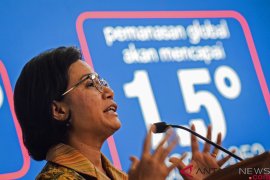"We are targeting 31.32 million tons of fishery production in the next five years, comprising 22.17 million tons of seaweed and 9.15 million tons of fish," Coordinating Maritime Affairs Minister Indroyono Susilo stated here on Thursday.
According to Susilo, the ministry will coordinate with various agencies in order to complete the development of the aquaculture site, which refers to the Provincial Administrations (Pemda) Law and the Coastal Zone Management and Small Islands Law.
The minister noted that the spatial arrangement should be structured by the Pemda. Recently, only four provinces and seven districts have resolved their arrangements.
Seaweed, as the main commodity of the nations fishery production, will be processed into various products other than consumer goods, such as materials for the manufacture of cosmetics, shampoos, and paints.
Fish cultivation also focuses on tilapia and iridescent shark fish for exports and catfish for domestic consumption. Catfish can be exported to other countries such as in the European Union (EU) if it is already sufficient to meet the domestic consumption.
Based on data furnished by the Maritime Affairs and Fisheries Ministry (KKP), the provisional figure for fishery production in 2014 was 14.5 million tons. The production will be targeted to reach 17.9 million tons in 2015, 19.43 million tons in 2016, 22.79 million tons in 2017, 26.72 million tons in 2018, and 31.32 million tons in 2019.
The KKP has also formulated seven flagship programs for the 2015-2019 period to achieve independence in aquaculture production, including the development of independent fish feed to reduce the costs by less than 60 percent.
Other programs include developing 100 integrated aquaculture centers, increasing competitiveness, doubling the fish production to 31.3 million tons in 2019, providing parental fish and fingerlings, conserving resources and sustainability of aquaculture, and developing fish farmers and entrepreneurs.
The other priority programs outlined for the year 2015 are to increase competitiveness with 8.2 thousand units of certified fish farming and 465 fish hatchery units, boost seaweed production in 100 locations, and develop self-reliance with the Independent Fish Feed Movement (Gerpari) in 70 locations.(*)
Editor: Heru Purwanto
Copyright © ANTARA 2015











